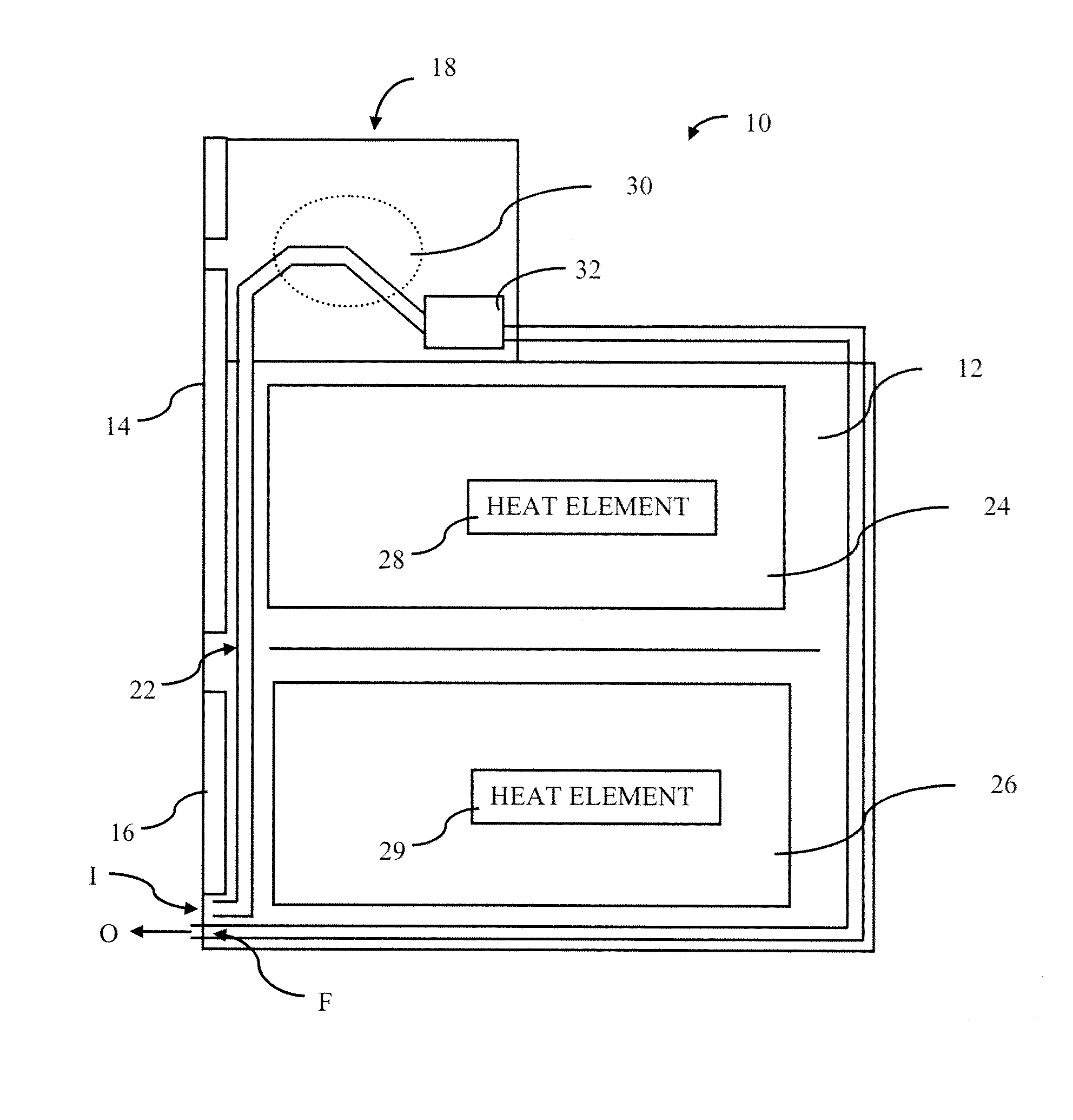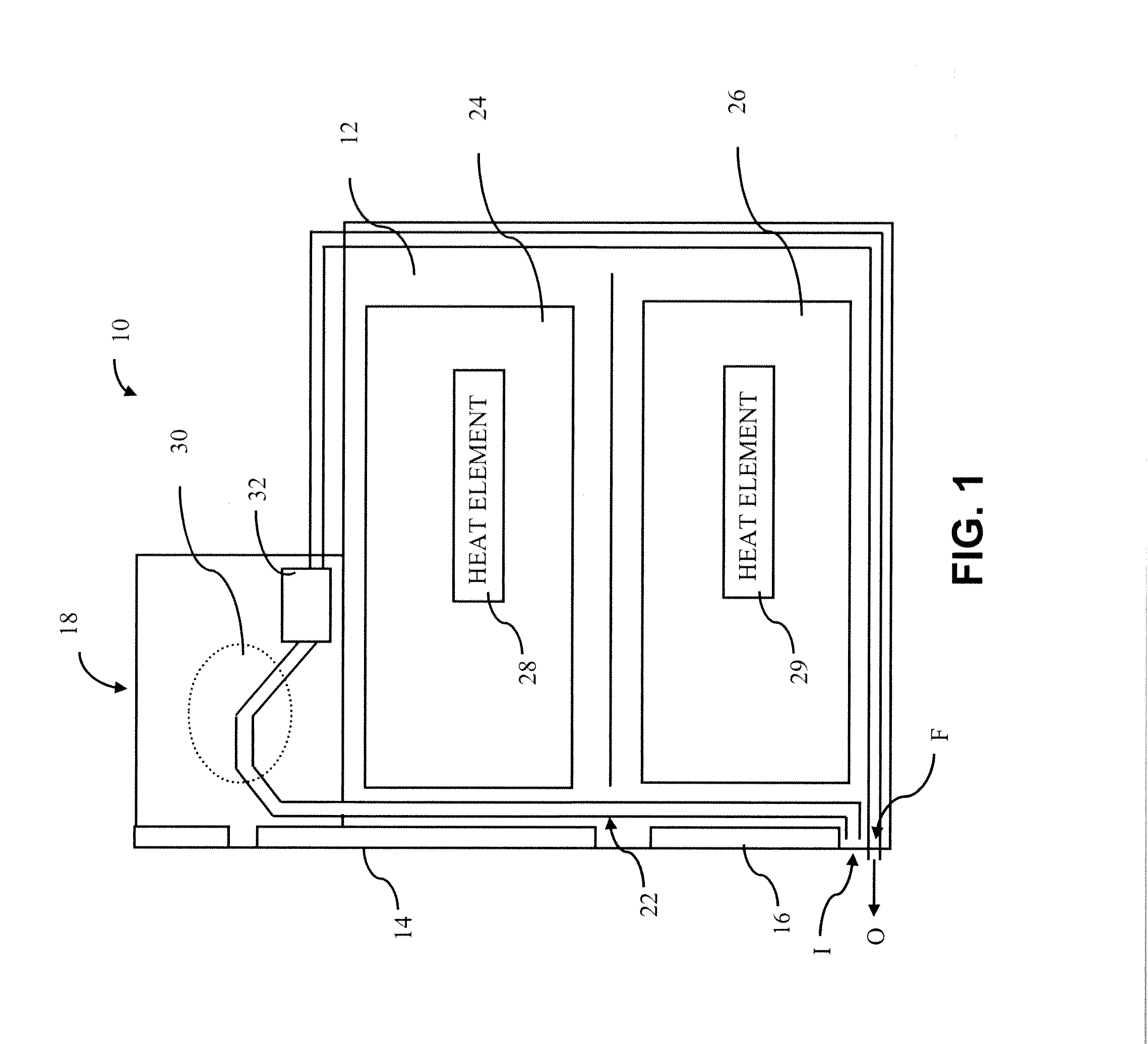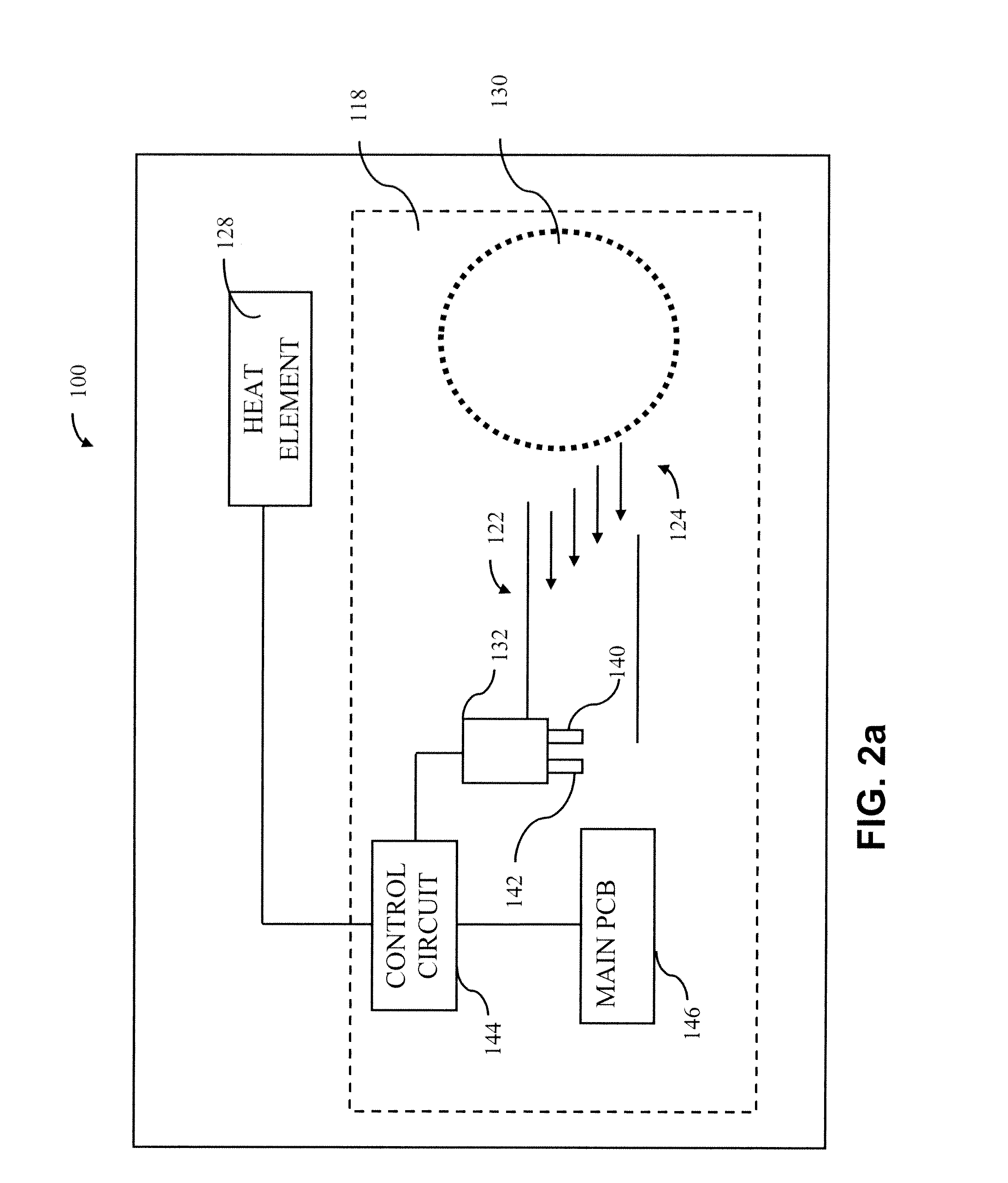Appliance airflow detection using differential heating of electronic devices
a technology of electronic devices and differential heating, applied in the field of applications, to achieve the effect of dissipating 99 the power
- Summary
- Abstract
- Description
- Claims
- Application Information
AI Technical Summary
Benefits of technology
Problems solved by technology
Method used
Image
Examples
Embodiment Construction
[0025]Referring to FIG. 1, illustrated is an exemplary appliance according to at least one aspect of the present disclosure, such as a double wall oven 10. The double wall oven 10 includes an outer housing 12 defining an interior space in which food or other items to be heated are placed, and upper and lower doors 14 and 16 for providing access to said interior space inside of which one or more heating elements are located. An electronics bay 18 is located on an upper side 24 of the oven 10 and contains various electronic controls for operation of the oven 10. Although an oven appliance 10 is illustrated, the present disclosure is not limited to any one type of appliance. Accordingly, basic features are described in the oven 10 briefly as an exemplary aspect of some embodiments herein.
[0026]For example, the oven 10 includes one or more cooling air-flow passageways 22 for circulating air around the oven chassis and the electronics bay 18. The passageway 22 defines a flow path F for t...
PUM
 Login to View More
Login to View More Abstract
Description
Claims
Application Information
 Login to View More
Login to View More - R&D
- Intellectual Property
- Life Sciences
- Materials
- Tech Scout
- Unparalleled Data Quality
- Higher Quality Content
- 60% Fewer Hallucinations
Browse by: Latest US Patents, China's latest patents, Technical Efficacy Thesaurus, Application Domain, Technology Topic, Popular Technical Reports.
© 2025 PatSnap. All rights reserved.Legal|Privacy policy|Modern Slavery Act Transparency Statement|Sitemap|About US| Contact US: help@patsnap.com



